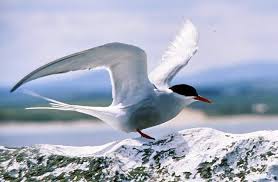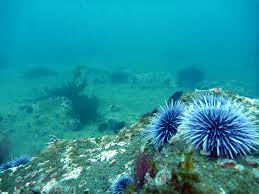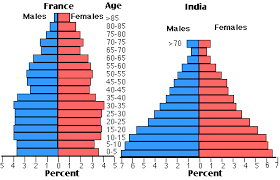Overview
Populations of any type of plant or animal gather in a particular habitat. They exist in a particular geographic distribution, have a distinct density, growth rate, and age structure. Populations grow and change by an interplay of elements, such as the amount and number of predators, the availability of food, water, and other conditions necessary to life.
Range
The range, or geographic distribution of a particular type of plant or animal, is the area where it can be found. For example, the Arctic tern migrates from the northern Arctic areas of Europe, Asia, and North America, where it builds nests, to the coasts of Antarctica. It depends on the time of year where the greatest populations can be found for birds and other animals that migrate.
Population Density
The density of the population of individual plants or animals in a particular area is the amount of that population divided by total land area or water volume. Suppose that 200 Arctic terns have nests on an island that is 50 square km in area. The population density would be 200/50 per square km, or 4 per square km. Population density is a very important measure of whether a particular species will be able to sustain themselves in a particular area. If the number of a species is not large enough to reproduce, it might become extinct. Conversely, if the population density of a species is too large, it may overwhelm the amount of resources that can sustain it. For example, many sea otters live in an area of kelp forests. The sea otters eat sea urchins, and keep that population in balance. If most of the sea otters are killed, the number of sea urchins in the population overrun the kelp forest. They and other organisms that depend on kelp die, because there is nothing more for them to eat.
Growth Rate
Populations grow if more plants or animals of a particular species are born than die. If plants or animals are introduced into an area or migrate there, the population can also grow. If there is enough room and food, the population can grow at a constant rate. If conditions are ideal, population growth follows an exponential curve. Fortunately, a growing population will expand to particular limits and stop growing, just as in the case of the sea urchins that used all the available kelp.
Age Structure
The age structure, or population pyramid can apply to any species studied, including humans. It can be used as a snapshot of a particular population, to predict what the population growth might be. The population is divided into groups using the percentage of males and females at each age. If the bulk of a population consists of young organisms cared for by adult organisms, the growth rate of that population will still be very high. A population grows much more slowly if the population is more evenly distributed.
Interested in science tutoring services? Learn more about how we are assisting thousands of students each academic year.
SchoolTutoring Academy is the premier educational services company for K-12 and college students. We offer tutoring programs for students in K-12, AP classes, and college. To learn more about how we help parents and students in Drummondsville, QC visit Tutoring in Drummondsville, QC




